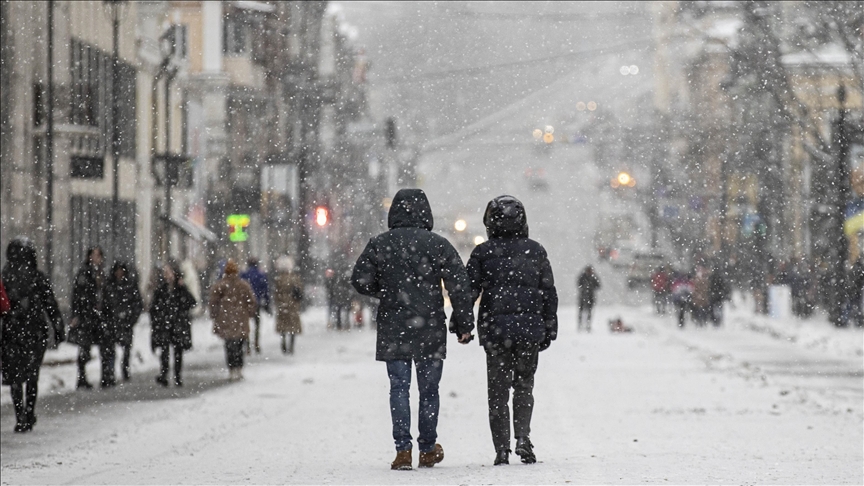ISTANBUL
The number of snowy days, the amount of snow that falls, and the time that it stays on the ground are all declining in many northern hemisphere nations, according to experts, and the trend is related to climate change.
Professor Murat Turkes from the Center for Climate Change and Policy Studies at Bogazici University told Anadolu that in spring and early summer, streams, groundwater, and soil are fed by melting snow.
“Dams and ponds are filled with melted snow since it is a significant source of precipitation and moisture. From dams and ponds loaded with snowmelt, we meet our demands for drinking water, utility water, agricultural water, and energy. In other words, it serves as a water and energy source,” he said.
“We know that precipitation that begins as snow in the high atmosphere throughout the winter, even in cold systems, cannot fall to the earth as snow due to climate change, particularly global warming, increasing tendency in lower atmospheric and surface air temperatures,” he added.
Yusuf Serengil, an expert at Istanbul University’s Cerrahpasa Faculty of Forestry, also noted that snowfall enables the rivers to flow throughout the year.
“Rapid raindrop contact with the ground has the potential to transfer dirt; this is known as stratum or surface erosion. Snow does not significantly erode since it melts slowly. Snowfall is usually far better for water efficiency and erosion prevention than rain,” he said.

